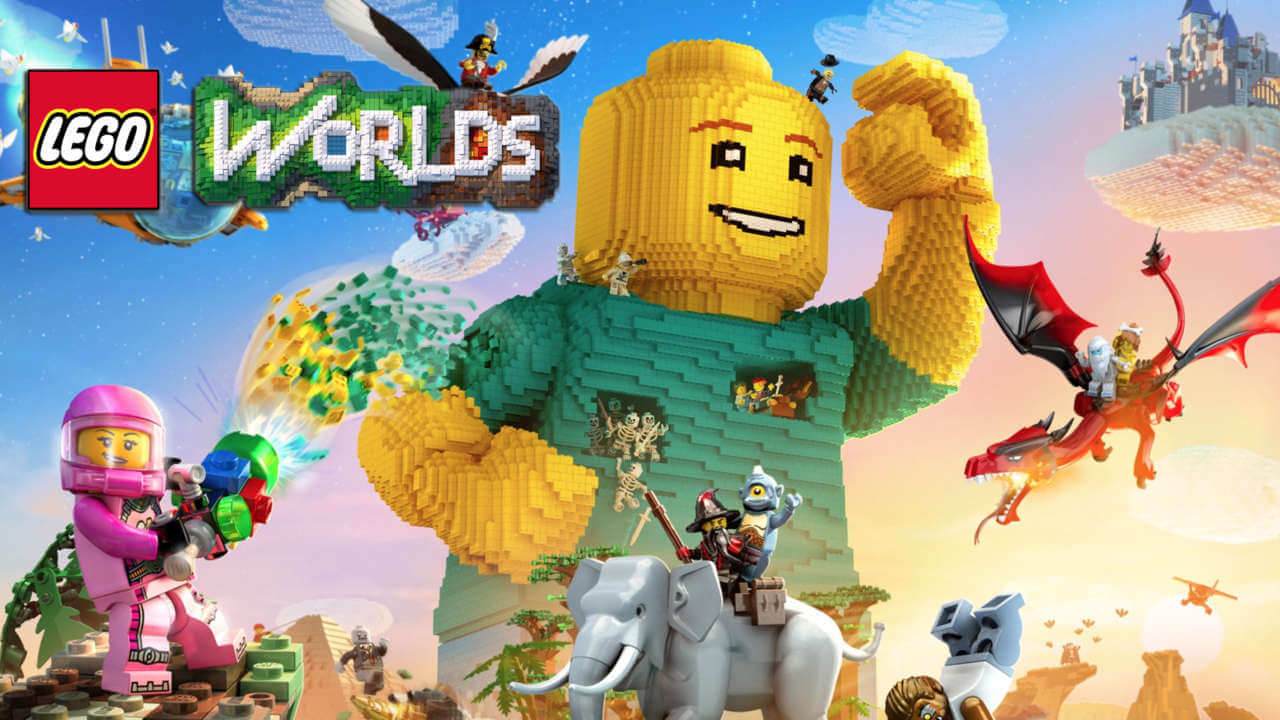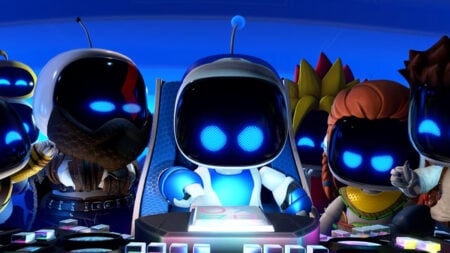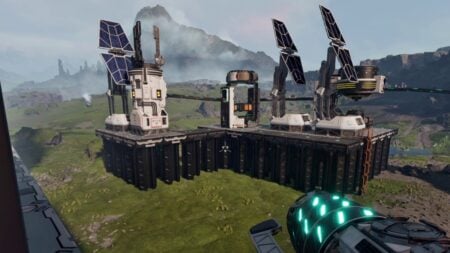Title: LEGO Worlds
Available On: PlayStation 4,
Publisher: Warner Bros. Interactive Entertainment
Developers: Traveller’s Tales, TT Games Publishing
Genre: Sandbox
Official Site: LEGO Worlds
Release Date: March 7, 2017
You are never too old to play with Legos. While Lego games – like the toys – are generally marketed to kids, it’s never to the extent that an adult can enjoy them, as was the case with Lego Batman, Lego Star Wars, and many others. This is also the case with Lego Worlds, but while the game is initially charming and creative, repetition sets in after a short amount of time.
Though it’s not the first Lego game I’ve ever played (Lego Island FTW baby!), it is the first one I’ve played since Traveller’s Tales took over. The game starts out crash landing my character on a remote island, with the spaceship I traveled in requiring repairs. Those repairs came in the form of gold bricks, needing five to be exact. These bricks were earned by doing remedial tasks for NPC’s on the island but were, more importantly, a means of providing me with tools and the tutorials to use them. While many will look at Lego Worlds and immediately state that it’s a Minecraft clone – which is ironic considering Lego’s inspired Notch – the introduction of these unique tools proves otherwise.

To help me navigate and create in the new world I was to explore, Lego Worlds provided me with five different tools. The first and arguably most important, tool I discovered was the Discovery Tool, allowing me to essentially scan objects that would automatically be placed into my building inventory (with some needing to be purchased).The Building tool does exactly as it sounds, and allows the ability build wherever my little heart desires, within reason. The Copy Tool made it possible to copy and save, not only my creations, but any buildings already created in the world, letting me just plop them down wherever there was room, even if it was a pirate ship and I was in a candy world. The Paint tool lets me get my Picasso on, with a rainbow of colors at my feet. My personal favorite was the Landscape Tool, which grants me the ability to warp the ground in a number different ways, lowering, raising and flattening areas as I saw fit.
It takes a couple of planets to fully get out of the tutorial and collect the tools, but once I did each were at my full disposal, no limitations, outside of unlocking certain special building pieces. It was at this point that I truly began to have fun, as I was able to explore a limitless amount of procedurally generated worlds, unlocking different character skins, animals, and buildings. My most memorable moment was walking around the first seed planet after exiting the tutorial and finding a beanstalk, straight out of a fairytale. Like jack, I began climbing, though there was no giant, there was indeed a castle in the clouds, filled to the brim with gold lego coins and other collectibles, including a soccer ball. I took a moment to look over the simple square landscape from above before skydiving back down to look for more gold bricks.
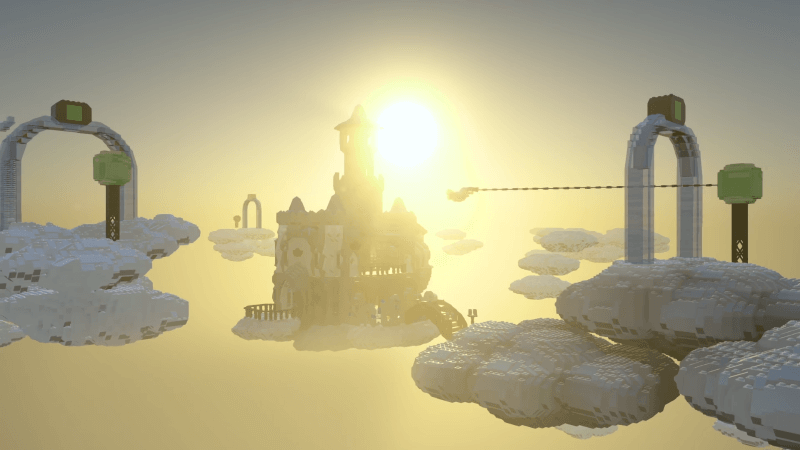
After a couple of hours of play, hunting for these brick became both difficult and repetitive. While I appreciates the games explore on your own, very little hand holding methods – aside from a snarky narrator who was one-third helpful, one-third funny, the other third annoying – the lack of a quest log made tracking down the guy who I just got the bow for difficult at times, as they would roam away. It’s rather generous to call them quest as well really, as most were simple fetch quest, that got repetitive rather quickly. I soon became bored with hunting for the gold pieces – which were required to unlock bigger seeds – so instead of farming them I just started doing what I did as a kid with Legos, I built.
The argument for some when it comes to Minecraft is that it would benefit from a story, myself included. But I think Lego Worlds is a great example of why Minecraft was so successful – and why Telltales Minecraft is such a mistake – and it’s the games focus on building. Lego’s have always obviously been about building things first and maybe adding your own story to it later. So despite not having everything at my disposal building wise unlocked, I just began building, and it was just as satisfying as doing it in real life. I really enjoyed the small things about the building system, for example, if I was building a roof for a structure the brick that I was about to place would have a shadow below it, showing where the placement is in correlation to the base. Other touches like auto-aligning gap height and fast brick building – though unfortunately, the deletion wasn’t able to do so – when placing the same amount of bricks in a straight line.
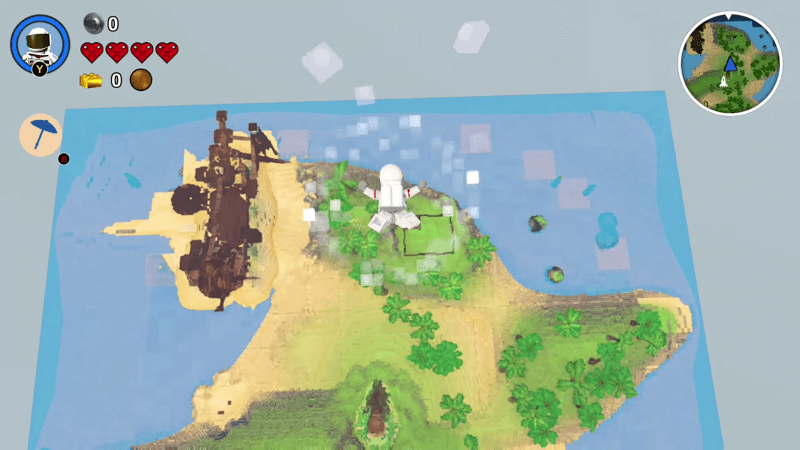
Like any sandbox, procedurally generated world, I ran into my fair share of framerate and world loading issues in Lego Worlds. Luckily it seems that the creators were fully aware this would happen, as they placed a parachute button in the menus for situations where the avatar is stuck or the world won’t load. The parachute option certainly helped when my character wasn’t moving, but it didn’t do much to help when I resorted to trying to use it to load in the world, that simply required my patience.
Overall Lego Worlds was a fun way to spend my day, but I don’t think I’ll be wasting as much time on it as I did on Minecraft when it came out. And that’s ok because, despite the claims that it was simply a carbon copy of Notch’s bestseller, it created its own identity, but it was simply a little more flawed. If you’re looking to water your nostalgic Lego urges, but don’t want to risk the pain that comes with cleaning up, and stepping on real life pieces, give Lego Worlds a shot.
- Gameplay: Unique tool system, quest system gets repetitive
- Graphics: Experienced some frame rate and world loading issues
- Sound: Narrator is funny, but wears out his welcome
- Presentation: A great way to play Legos without the mess
[embedyt] https://www.youtube.com/watch?v=bYcuCnlI_UI[/embedyt]
[review]

